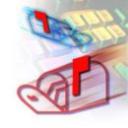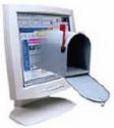 Many have been victimized by identity theft and no other area has been so affected as the banking industry. Investment in upgrading and purchasing newer technology and software is one of the most expensive costs for the banking sector which has one of the highest losses when it comes to IT security. Banks and other financial institutions are expected to pour billions of dollars into buffing up their defenses in hopes of staying one step ahead of fraudulent claims and users. The culprit, the internet, the internet has become one of the most dangerous territories on earth for anywhere financial information is transmitted and used, it can be intercepted and misused. True to the dilemma, health industry leaders have also begun to recognize the rising costs associated with identity theft related medical claims. This has already been in the forefront of the battle in the US and is fast spreading around the world and company after company is falling victim to the said crime. The internet also makes it easy to get away with the crime for use of public access which can be traced but the user may be any of the millions of users at one time. Hackers can also turn to call bouncing options which is more akin to spy movies but is really possible. The banking industry has long been a target of ID theft more so in their credit card divisions where billions are lost annually to fraudulent claims and use. Technology is the only security these establishments have as defense but technology as we know it costs a lot but there may be no other choice for them. Buy or bust is the dilemma and they are surely buying.
Many have been victimized by identity theft and no other area has been so affected as the banking industry. Investment in upgrading and purchasing newer technology and software is one of the most expensive costs for the banking sector which has one of the highest losses when it comes to IT security. Banks and other financial institutions are expected to pour billions of dollars into buffing up their defenses in hopes of staying one step ahead of fraudulent claims and users. The culprit, the internet, the internet has become one of the most dangerous territories on earth for anywhere financial information is transmitted and used, it can be intercepted and misused. True to the dilemma, health industry leaders have also begun to recognize the rising costs associated with identity theft related medical claims. This has already been in the forefront of the battle in the US and is fast spreading around the world and company after company is falling victim to the said crime. The internet also makes it easy to get away with the crime for use of public access which can be traced but the user may be any of the millions of users at one time. Hackers can also turn to call bouncing options which is more akin to spy movies but is really possible. The banking industry has long been a target of ID theft more so in their credit card divisions where billions are lost annually to fraudulent claims and use. Technology is the only security these establishments have as defense but technology as we know it costs a lot but there may be no other choice for them. Buy or bust is the dilemma and they are surely buying.
IT Security – the outlook for 2008

Wireless networks and ways of protecting them will top most of the IT Security issues for the coming year. Predictions place wireless networks to slowly take over the now existing networks and development into WiMax which has more coverage area in terms of distance compared to WiFi is making this a fast reality. Players in the WiMax development include the biggest names in the wireless network area such as Intel, Samsung, Motorola and many more. Innovations will continue to push the technology to better and improved performance like never before.
Studies also show that more and more workers are turning to wireless computing for their network and office needs doing what they do in the most unlikely places such as coffee shops and anywhere else they can get a stable and sustainable connection. It also raises ethics issues for people will no longer be out of reach of networks and equally their jobs. Family time and other more casual needs for privacy and quiet time will be secondary for your boss can always reach you anywhere on the planet there is coverage of a network.
The death of satellite based communications has spurred rapid development of Voip allowing anybody connected to the internet instant access to telephone-like services without the use of dedicated telephone lines. This saves on telephone bills and has been in use heavily initially with call centers and has now shifted to mainstream use so more is to be expected of the technology in the years to come which may ultimately result in the death of the standard telephone service many opting for high-speed internet access instead.
The release of the Quad-core processors and planned development of more multi-core microprocessors fuels the future of laptop supercomputers which may come in following years. This and all of the better and improved technology will allow computing to soar into new heights making them a mainstay in our everyday lives for the future.
[tags]Multi-core Processors, Mobile Computing, Mobile Workforce[/tags]
Network Assessment tools – for a better/secure network

In the time when people are going more and more mobile making the telecommuting concept a true reality, the existence of the wall-less office has slowly been realized. The shift to WiFi and other wireless networking solutions has allowed people to work like never before without the wires that tied them physically to desks. More and more areas like metropolitan areas are putting up hot spots that allow constituents to work within specific areas which already have existing wireless networks. Even offices have shifted to the technology due to cheaper implementation without the expensive wires needed for each and every workstation. Maintenance of said wired networks also proved to be a very challenging task due to the restricted spaces and conduits which housed them behind walls, ceilings and under the floors. WiFi allowed then network to function without physical connections allowing mobile devices to be connected and linked to the network which could be taken anywhere in the office.
The wireless office has indeed given us more in the area of freedom but it has also created a more vulnerable network for control on who gets which access and other security issues quickly emerged. Software and hardware systems like Retina from eEye Corporation allowed network engineers and managers to analyze and address security loopholes such as unauthorized devices connected to the network like the occasional iPhone and most other unauthorized wireless devices. It also serves as an analysis tools on the proper placement and function of wireless antenna which can be analyzed based on signal strength. Weak signals can mean re-positioning the antenna system or worse it could be a signal of a pending failure for a specific network device. It can also show the effectivity of the network in terms of utilization and bandwidth that is being effectively shared/used by the users.
[tags]Network Invetory, Network Usage, Maximizing Internet Use[/tags]
Spam a continuing cost for Businesses

No, it’s not the luncheon meat though we hope it was. It’s those annoying unsolicited messages or email that fills your mailbox at home and in the office is costing businesses a lot of money according to a study conducted by Nucleus Research Inc. coming up with a figure of $712.00 per employee as cost of spam per year. This goes to show the amount of wasted resources such as time and effort by employee’s and the amount of traffic it taxes on already burdened network systems.
ISP’s have had to add provisions as well in the form of hardware upgrades to increase capacity and storage unknowingly due to these uncalled for messages. Software companies are making a buck from all this but according to Symantec, almost 70% of all email that passes through the internet is spam and it costs a lot to handle and get rid of. Even if a company has the proper intercept software to prevent them from getting in, storage space in terms of quarantined email still carries some cost till it is deleted and sent into oblivion.
Even at home, you are not spared from the rigors of going through your junk email even with spam filters. Some who don’t bother or simply do not know how to use them experience worse than their protected counterpart having to deal with hundreds upon hundreds of them in a day. Transmission, storage and interception all have costs when you look at it from the point of a business and they all have to stop. Unfortunately, till the makes of these unsolicited mail is stopped at the source this might be an impossible task. Take the sample of an economic impact, Nigeria being one of the most likely sources of spam suffers greatly for a search engine due to the lessened priority given to the results containing the word Nigeria. Email with the same name are also intercepted and junked by most scanners thus limiting the information getting through about the African country.
[tags]Email Scams, Wasted Time[/tags]
New Email Scam



A new twist into the old email scam books, the fraudulent scam that asks for money from unsuspecting friends and acquaintances listed in your address books. True, many have been victimized by the said ploy wherein people gain access to your address book and sending out email that solicits cash funds to be wired to a location somewhere around the world. The scam began in Africa when a journalist began receiving unexpected calls and email regarding his misfortune in the African continent where he was supposedly on vacation and stuck in a hotel without any cash funds or other form of identification.
The incident used Yahoo which the perpetrator has broken into and taken the liberty of obtaining all the names and email addresses contained in the popular email facility service’s files. These addresses were then sent fake email messages telling the unfortunate story of you getting into misfortune somewhere and that you are in dire need of cash which you are supposed to pay back as soon as you return from the said trip ending the ordeal. It is a fake emergency message though and there have been many reports of similar cases happening using all the email services around. How the thieves got into the address book getting the necessary information is still a mystery and the guy who reported it first (who happens to be in the journalism business) had to go through a long process of getting all the account information from yahoo through phone after a lengthy conversation to prove that he was actually who he claimed to be. So, people be alert for the said scam and be sure to verify all incidents with the senders as well as alert all members of the family and your friends of such crazy behavior.
Credit Card Fraud Peak Season
True, the holiday’s is the hottest time when credit card fraud runs into the millions of dollars. There are many incidents of fraud out on the market and shopping is a very casual task many take for granted. A leading credit card company from the US reported losses in the millions of dollars that they do not readily publicize for it has an impact on their customers confidence in their systems.
There is no true protective measure for something as small and compact as a credit card which in the wrong hands can cost you a few hundred dollars or even max out your credit limit. Crime syndicates use the said tactic for their illegal activities where they have people who handle these fraudulent transactions. There is still a wide open gap when it comes to credit card which may be covered by newer fool-proof security. The addition of biometrics to the standard card swipe can provide an added level of security along with fingerprinting.
Simple steps can also be taken to prevent these actions towards you such as being careful where and when you use your credit cards. When paying, be sure to have in plain sight the reader or terminal where the card is swiped to be sure they are used only for the intended purchase a card fraud scheme wherein a separate card reader is used to record the information contained within the card has been going on for a long time where the captured information can be used for purchases. Before signing the print-out or receipt, be sure to check all details such as the purchase amount and other such vital information. If you do end up loosing a credit card or your whole wallet, immediately call your card company so the said card can be tagged as stolen so further purchases are not billed to you. If there happens to be any inaccuracies in your card’s statement, call information at once for there may be a problem with your card of worst somebody may have already copied the information from your original card. Vigilance and awareness is the key so be on the lookout for any dubious people around you. Keep safe people and a Merry Christmas to all.